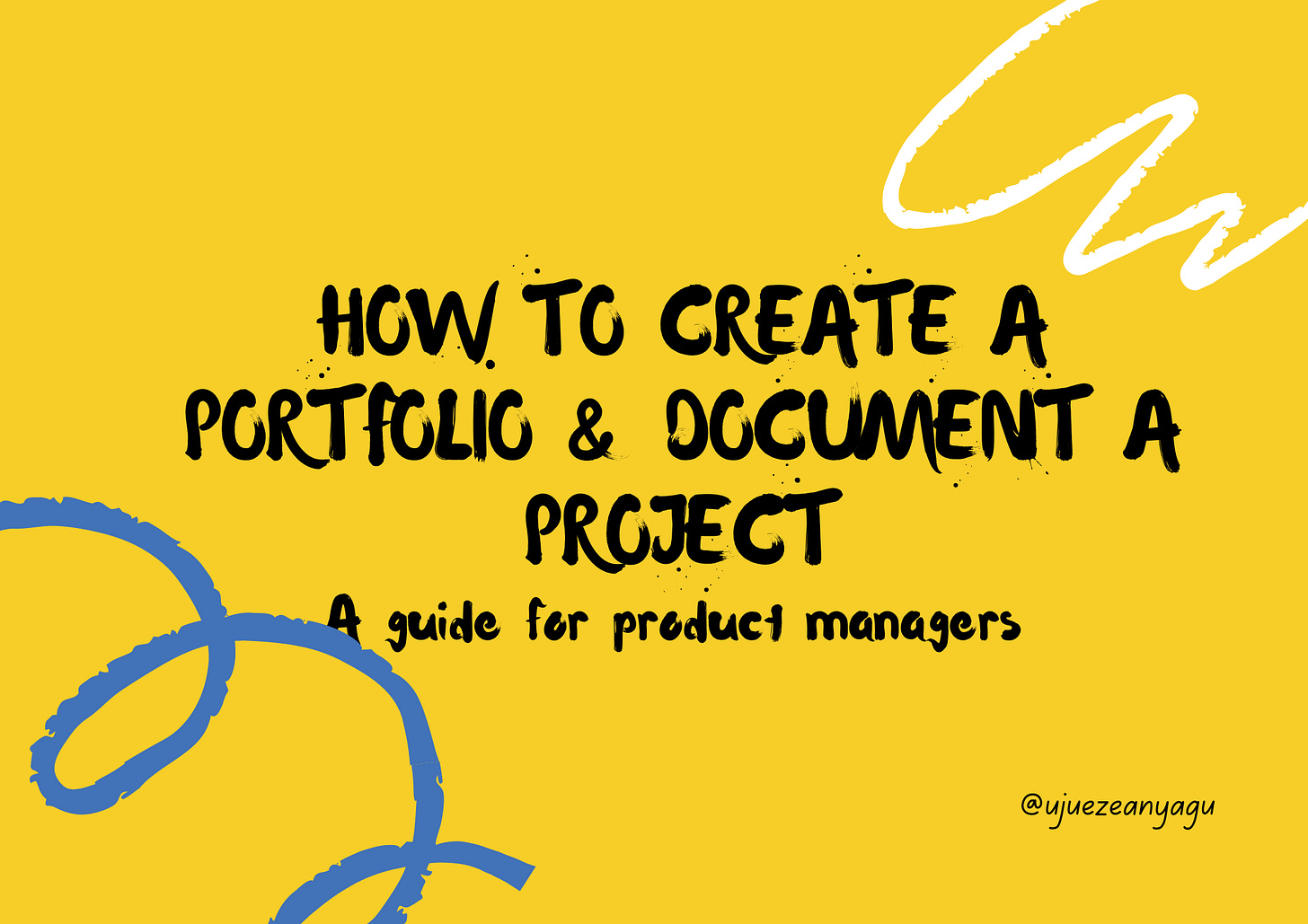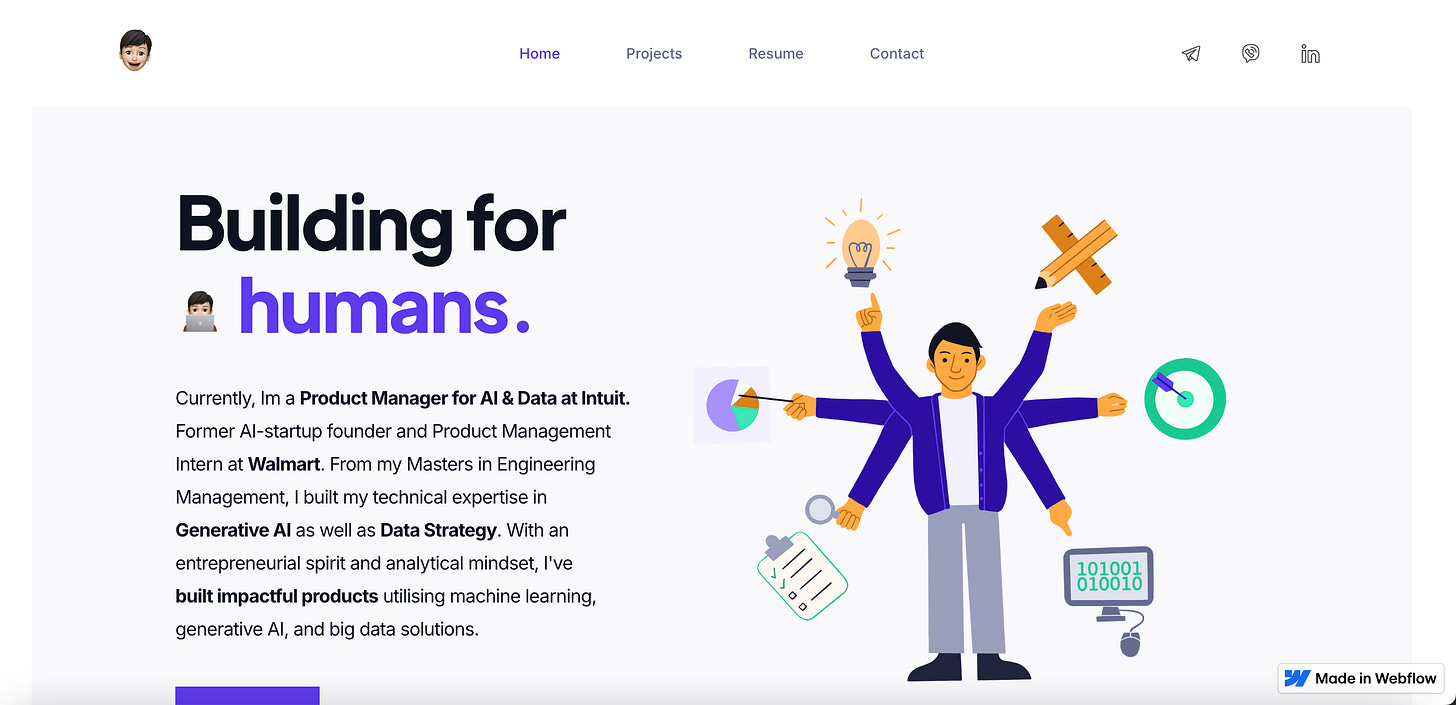One way professionals showcase their skills is by creating a portfolio - a collection of projects or products they’ve worked on.
As it’s become a common practice by aspiring and experienced product managers, it’s more important that professionals, especially job seekers, create a compelling portfolio. It is no longer enough to have a portfolio; it must be created and presented excellently for you to stand out amongst other professionals.
This article will discuss the common mistakes professionals make when creating a portfolio or documenting their projects. We’ll look at best practices and tools for your documentation.
Creating Your Portfolio
Common mistakes seen in a portfolio
Candidates use Google Drive. Using Google Drive makes it harder for reviewers to get a high-level view of the project without clicking on each document. Recruiters have a few minutes to assess your application, and it’s important to present summary information to the reader. Also, you can run into accessibility issues with Google Drive, where the viewer has to request access to the drive.
The portfolio has a poor layout and formatting. The images are too small or have a poor quality.
There are too many poorly done projects. It isn’t about quantity but rather quality. Rather than having 6 projects with poor content and formatting quality, I recommend presenting 3 high-quality projects.
Links to projects do not give a detailed description of the project and your work. I see professionals link their projects in a portfolio to prototypes on Figma or the product website without context on the project. Product recruiters are interested in more than just the outcome but how you solve problems.
Guidelines for creating a portfolio
The portfolio should contain the following:
An “About You” section
A photo of yourself (optional). Keep it professional.
Brief description of at least 2 projects with a link to more details about the project and the product website (if available)
Contact details
Link to resume. Alternatively, you can add your CV to your portfolio
Other sections, such as skills, articles, other works and interests, are optional.
Keep it concise. No one wants to go through much detail to learn about you or your work.
Ensure your formatting is consistent and the layout is well-presented. If you create a website, the design is important, and you’ll be assessed by it, not just the content.
Make your project titles clear. For example, instead of "VBank Makeathon projects", title it "B2B visitor management solution". Another example is “Launching the Visa ID Intelligence: An Ecosystem of Authentication Solutions with Effective Fraud Prevention”. A good title encourages readers to click to learn more, especially when they identify a similar project.
Listing all the skills known in product management. It just makes it unbelievable. Share ~4 strong skills you have.
Make it unique. I see many portfolios that look very similar especially those created with Vzy. You want to stand out, which is a great opportunity. Add a unique design element or structure to your portfolio so that it is memorable.
Pay attention to the details. Check for writing errors and consistency in the structure.
Here’s a good product management portfolio example by Dan Shetty built with Webflow.
Tools to create a portfolio
You can use any of these tools to create a Portfolio:
Google Doc
Notion
Vzy: AI website builder
Webflow: Website builder.
Other no-code web development tools.
Documenting your project
Common mistakes in documenting your project
There is no access to project files. Another common mistake is restricting access to their files. Candidates often use Google Docs, Notion or Microsoft files to document their projects, which is okay. However, they fail to enable public access to their documents. Note that when you create a new document with any of these tools, they have restricted access by default, so you’ll have to enable public access.
There is no clear problem and much focus on the solution. Readers want to know how you solve problems, so work them through your decision-making process.
Too many details. The project documentation becomes too long, and the reader loses interest.
There is no clear angle. Are you creating a new product as part of a team, a fictional case study, or a product tear-down?
Poor structure. Content structure is crucial but often done incorrectly. Your documentation should tell the story of how you identified a problem, the options you considered to solve it, the solution you developed, and the results and lessons learned.
Poor design and formatting. Some professionals use poor images and inconsistent formatting in their project documentation, making their work look messy.
Guidelines for documenting a project
The document should contain the following:
Summary
Background & Discovery
Problem statement
Success metrics
Solution
Solution brief
Unique value proposition
Product strategy
Product requirements
Limitations
Target audience
Competitive analysis
Product design
Product release and accomplishments
Learnings
Assumptions
Check out this project documentation template to learn more.
For product tear-downs, I’d recommend the following:
State your objective, for example, increase revenue, improve customer satisfaction, etc.
Select 1 to 3 major problems with the product.
Analyse the problem. Add any research work.
Present solutions with justifications.
State how you’ll track results.
Keep your documentation brief. Avoid going into much detail in each section. I’ve added the Summary to the project documentation content (optional but recommended) because it’s an opportunity for you to share high-level project details.
Include details about why you make certain decisions and keep it consistent.
Apply good product development & management principles to your documentation, even if it is a fictional project. Ask yourself:
Is my problem statement clear?
Is my target audience (for the product) too large?
Are my justifications for decisions present and consistent?
Are the product features well-written?
Do I have the right target metrics, and how would I track them?
Have I assessed the desirability, feasibility and business viability?
What did I learn from this project?
Etc.
Remember, quality content makes you stand out.
Check for writing errors and ensure your sentences are clear.
Regularly update your project documentation as the project evolves or as you learn more about product management best practices. It should be a living document.
Tools for documenting your project
You can use any of these tools to create a Portfolio:
Google Doc
Notion
PDF
Google Slides or other PowerPoint tools.
No code web-development tools.
In summary, almost everyone is creating a portfolio today. Ensure yours is compelling and makes you stand out from the crowd.
When you are ready, I can help you achieve your product manager career goals in 3 ways:
Get the book titled “Impressive CV Writing for Entry-level Product Managers from Diverse Academic and Work Backgrounds” here.
Join a free online community for entry-level and transitioning PMs. Learn from experienced PMs and recruiters, ask a question and get access to curated resources. Join here.
1-1 mentorship: Get 1-1 mentorship to land your first PM job or gain product expertise. Go from overwhelmed beginner to outstanding in weeks. Email me at ezeanyaguuju@gmail.com to learn more and book a session.




This is exactly what I need at this point in my career. Very helpful piece. Thank you so much!
Very much well said and explained. 👍